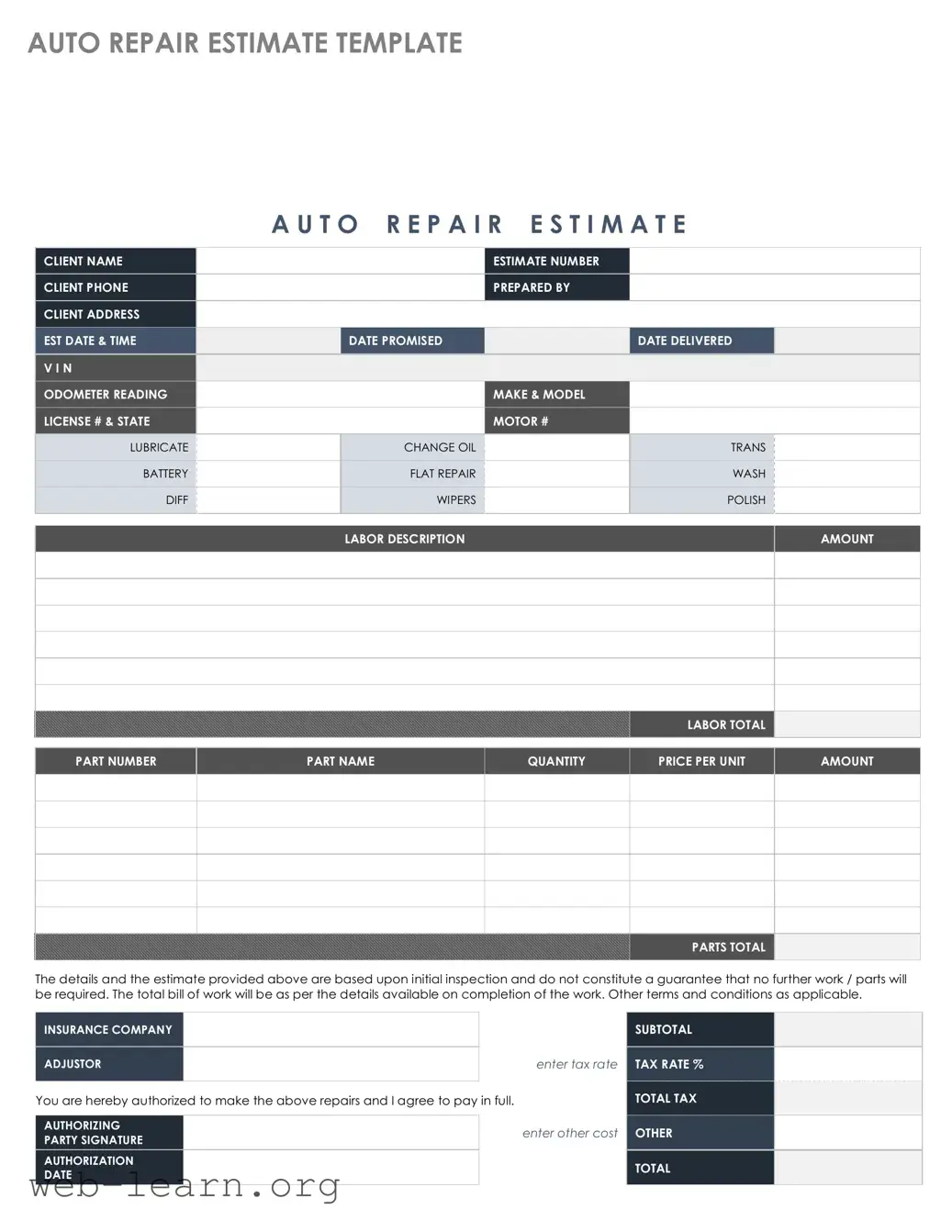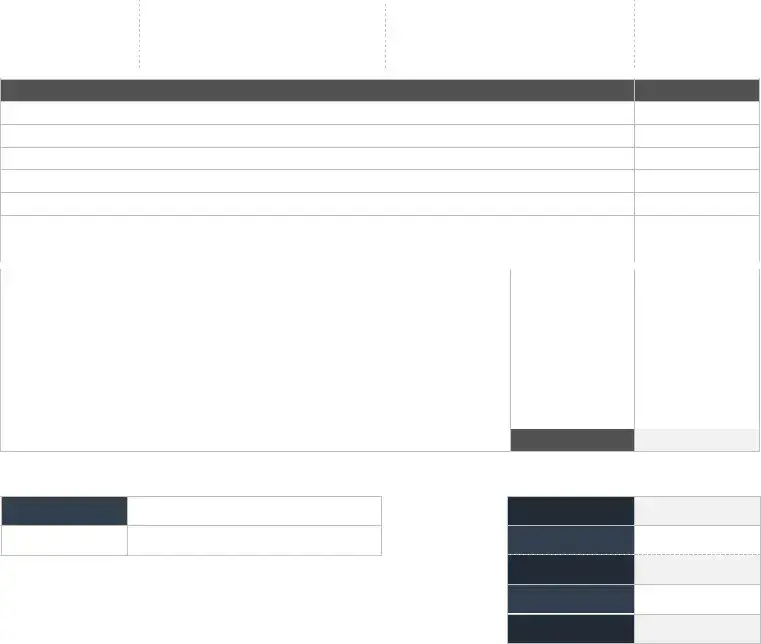Filling out an Auto Repair Estimate form can seem straightforward, but many people make common mistakes that can lead to confusion and delays. One frequent error is leaving essential information blank. The estimate form typically requires details like vehicle make, model, and year. Missing out on these basic facts can result in an inaccurate estimate, leading to unexpected costs later on.
Another mistake is providing inaccurate contact information. It's essential to ensure that your phone number and email address are correct. If the repair shop needs to reach you for updates or approvals, the absence of correct data can prolong the repair process and hinder communication.
Many individuals overlook the importance of detailing specific repair needs. General descriptions can result in misunderstandings. Clearly indicating the issues your vehicle is experiencing helps mechanics provide a more accurate estimate. Failure to do so may lead to unexpected repairs or additional costs.
Additionally, some people forget to include previous repair history. If your vehicle has had similar issues in the past, mentioning this on the estimate form provides valuable context. It helps mechanics identify potential underlying problems that need to be addressed.
Another common mistake occurs when individuals do not review the final estimate carefully before submitting it. Typos or omissions can easily happen. A missed detail may affect the accuracy of the estimate. Taking a moment to double-check the entire form can save time and resources later.
Misunderstanding the warranty terms can also lead to problems. Some individuals may assume all repairs are covered under a warranty without confirming details. It’s vital to clarify what the warranty entails. This understanding will help in budgeting for repairs and avoiding surprise costs.
People might also misinterpret necessary signatures or approvals. Some estimate forms require your signature to proceed with the work. Skipping this step can lead to delays, as the repair shop will be unable to begin the work without your consent.
Lastly, many forget to keep a copy of the completed form for their records. Having a documented estimate can help track repairs and serve as a point of reference for future service appointments. This oversight can make it harder to compare estimates or verify what has been done on the vehicle.

